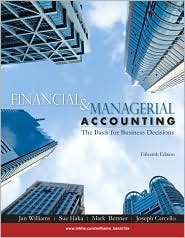Question
V bonne plc harvests, extracts and produces cocoa powder. The company has given the fol-lowing information about its divisions: Division Origin Division G Located in
V
bonne plc harvests, extracts and produces cocoa powder. The company has given the fol-lowing information about its divisions: Division Origin Division G Located in Country H Division N Located in Country O Process function Harvests, ferments, dries and roasts the cacao bean Grinds into cocoa powder and packages it for selling and distribution Bonne plcs transfer pricing policy is that Division G must always satisfy the demand from Division N for the supply of cacao beans before they sell cacao beans to any external customers. DIVISION G Capacity External demand for dried cacao bean Demand from Division N for dried cacao bean External market selling price for dried cacao bean Variable costs Annual fixed costs DIVISION N Sales of cocoa powder Current market selling price for cocoa powder Required input for production of 1 tonne of cocoa powder Cost of grinding cacao beans Annual fixed costs 975 tonnes 39,000 per tonne 2.43 tonne of cacao beans 3,900 per tonne of input 1,950,000 (Continued. Objective Sold to Division N and external customers Sold to external customers Currency Tax rate CURRENCY P 35% CURRENCY P 15% The transfer price used for the sale of cacao beansPractical tasks Use a spreadsheet to complete the following tasks for both divisions: 1 The budgeted profit after tax figures for the coming year. 2 The budgeted contribution figures if Bonne plc changed its transfer pricing policy to state that transfers must be made at opportunity cost. Hint: Your calculations for both tasks should show sales and costs split into external sales and inter-nal transfers where it is deemed appropriate. Research and presentation Using PowerPoint highlight the following: The directors have looked at the calculations in task 1 and are quite concerned that this will have a number of implications when it comes to tax. The main concern is that the tax authorities might fine Bonne plc if they suspect that the transfer price is too low. 3 Prepare and present calculations that demonstrate the potential tax consequences of Bonne plcs original transfer pricing policy compared to that of an arms-length transaction as viewed by the tax authorities. 4 Include an analysis of the impact of changing to an arms-length price on the profitability of the two divisions and the group as a whole. 5 The behavioural issues that could arise as a result of Bonne plcs head office staff imposing transfer prices, instead of allowing the divisional managers to set the prices independently. Use figures from tasks 1 and 3 to support your answer.
bonne plc harvests, extracts and produces cocoa powder. The company has given the fol-lowing information about its divisions: Division Origin Division G Located in Country H Division N Located in Country O Process function Harvests, ferments, dries and roasts the cacao bean Grinds into cocoa powder and packages it for selling and distribution Bonne plcs transfer pricing policy is that Division G must always satisfy the demand from Division N for the supply of cacao beans before they sell cacao beans to any external customers. DIVISION G Capacity External demand for dried cacao bean Demand from Division N for dried cacao bean External market selling price for dried cacao bean Variable costs Annual fixed costs DIVISION N Sales of cocoa powder Current market selling price for cocoa powder Required input for production of 1 tonne of cocoa powder Cost of grinding cacao beans Annual fixed costs 975 tonnes 39,000 per tonne 2.43 tonne of cacao beans 3,900 per tonne of input 1,950,000 (Continued. Objective Sold to Division N and external customers Sold to external customers Currency Tax rate CURRENCY P 35% CURRENCY P 15% The transfer price used for the sale of cacao beansPractical tasks Use a spreadsheet to complete the following tasks for both divisions: 1 The budgeted profit after tax figures for the coming year. 2 The budgeted contribution figures if Bonne plc changed its transfer pricing policy to state that transfers must be made at opportunity cost. Hint: Your calculations for both tasks should show sales and costs split into external sales and inter-nal transfers where it is deemed appropriate. Research and presentation Using PowerPoint highlight the following: The directors have looked at the calculations in task 1 and are quite concerned that this will have a number of implications when it comes to tax. The main concern is that the tax authorities might fine Bonne plc if they suspect that the transfer price is too low. 3 Prepare and present calculations that demonstrate the potential tax consequences of Bonne plcs original transfer pricing policy compared to that of an arms-length transaction as viewed by the tax authorities. 4 Include an analysis of the impact of changing to an arms-length price on the profitability of the two divisions and the group as a whole. 5 The behavioural issues that could arise as a result of Bonne plcs head office staff imposing transfer prices, instead of allowing the divisional managers to set the prices independently. Use figures from tasks 1 and 3 to support your answer.
Step by Step Solution
There are 3 Steps involved in it
Step: 1

Get Instant Access to Expert-Tailored Solutions
See step-by-step solutions with expert insights and AI powered tools for academic success
Step: 2

Step: 3

Ace Your Homework with AI
Get the answers you need in no time with our AI-driven, step-by-step assistance
Get Started


